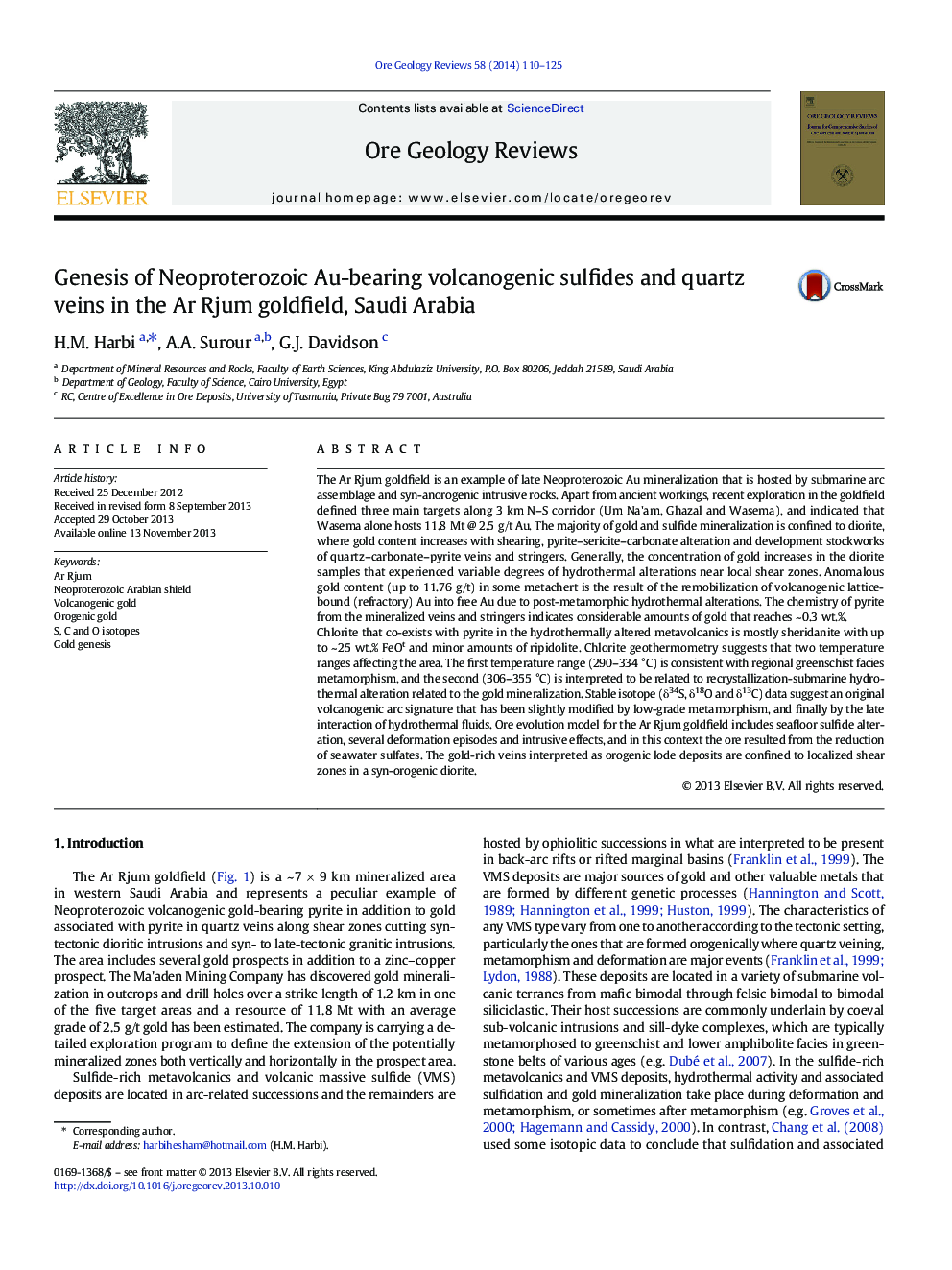| کد مقاله | کد نشریه | سال انتشار | مقاله انگلیسی | نسخه تمام متن |
|---|---|---|---|---|
| 6435918 | 1637245 | 2014 | 16 صفحه PDF | دانلود رایگان |
- Gold-hosted Neoproterozic mineralization in sub-marine arc assemblage.
- Syn-orogenic plutonites played role in gold enrichment.
- Remarkable gold contents in veins and stringers in sheared diorite.
- Genesis is supported by stable isotopes and chlorite thermometry.
The Ar Rjum goldfield is an example of late Neoproterozoic Au mineralization that is hosted by submarine arc assemblage and syn-anorogenic intrusive rocks. Apart from ancient workings, recent exploration in the goldfield defined three main targets along 3 km N-S corridor (Um Na'am, Ghazal and Wasema), and indicated that Wasema alone hosts 11.8 Mt @ 2.5 g/t Au. The majority of gold and sulfide mineralization is confined to diorite, where gold content increases with shearing, pyrite-sericite-carbonate alteration and development stockworks of quartz-carbonate-pyrite veins and stringers. Generally, the concentration of gold increases in the diorite samples that experienced variable degrees of hydrothermal alterations near local shear zones. Anomalous gold content (up to 11.76 g/t) in some metachert is the result of the remobilization of volcanogenic lattice-bound (refractory) Au into free Au due to post-metamorphic hydrothermal alterations. The chemistry of pyrite from the mineralized veins and stringers indicates considerable amounts of gold that reaches ~ 0.3 wt.%.Chlorite that co-exists with pyrite in the hydrothermally altered metavolcanics is mostly sheridanite with up to ~ 25 wt.% FeOt and minor amounts of ripidolite. Chlorite geothermometry suggests that two temperature ranges affecting the area. The first temperature range (290-334 °C) is consistent with regional greenschist facies metamorphism, and the second (306-355 °C) is interpreted to be related to recrystallization-submarine hydrothermal alteration related to the gold mineralization. Stable isotope (δ34S, δ18O and δ13C) data suggest an original volcanogenic arc signature that has been slightly modified by low-grade metamorphism, and finally by the late interaction of hydrothermal fluids. Ore evolution model for the Ar Rjum goldfield includes seafloor sulfide alteration, several deformation episodes and intrusive effects, and in this context the ore resulted from the reduction of seawater sulfates. The gold-rich veins interpreted as orogenic lode deposits are confined to localized shear zones in a syn-orogenic diorite.
Journal: Ore Geology Reviews - Volume 58, April 2014, Pages 110-125
